calsfoundation@cals.org
Elkhorn Tavern
Elkhorn Tavern is one of the most important historical buildings in Benton County. The tavern bore witness to many significant events in northwestern Arkansas in the mid-nineteenth century, such as the establishment and use of Telegraph Road, Indian Removal, the beginnings of the Butterfield Overland Mail and Stage Company, and the campaigning of Civil War armies.
Elkhorn Tavern was built by William Ruddick in 1833. It was a two-story log structure and two-pen dogtrot house. One of the first post offices in Benton County was established in the tavern in 1837. A Baptist sect moved its meeting place at the tavern due to “noisy parties and dances now being held at the inn” by Union soldiers.
The United States military began to remove Native Americans from their ancestral homelands to Indian Territory (present-day Oklahoma) during the winter of 1838–1839. Thousands of Cherokee traveled past the tavern on their way to Indian Territory and camped in the open fields south of the tavern. A tour stop at Pea Ridge National Military Park was dedicated to all those Native Americans who made the trek known as the Trail of Tears. Shallow depressions made on that journey are still visible in the twenty-first century.
In 1858, Jesse and Polly Cox came from the Kansas-Nebraska Territory to northwestern Arkansas. They purchased the tavern and 313 acres for $3,600. The Cox family developed an apple orchard, raised cattle, employed a blacksmith shop, and built outbuildings. The Cox family eventually operated a trading post and telegraph office from the tavern. A neighbor supposedly gave the Cox family elk horns as a gift. The Cox family mounted the horns on the top of the tavern, thus giving the structure its name. The building is located at the confluence of two historic road beds, Telegraph Road and Huntsville Road.
The Butterfield Stage and Overland Mail Company began operating over Telegraph Road in 1858. The U.S. Congress stipulated in John Butterfield’s contract that he would provide mail service every twenty-five days from St. Louis, Missouri, to San Francisco, California. Elkhorn Tavern was a rest stop for passengers on the stage. Beginning in 1860, the first telegraph wire passed through the Ozark Mountains and connected St. Louis with northwestern Arkansas.
During the 1862 Battle of Pea Ridge (also called the Battle of Elkhorn Tavern), the Union Army of the Southwest, under the command of Samuel Ryan Curtis, occupied the tavern first. Provost Marshal Major Eli Weston established his headquarters at the tavern. He created a prisoner-of-war camp and a commissary in the Cox family outbuildings. On March 7, 1862, the Confederates pushed the Union army back from the tavern and seized the commissary. Ephraim Anderson, a Confederate soldier, described the food stuffs that were seized at Elkhorn Tavern as “barrels of flour, fine hams, good coffee, oysters, sardines, lobsters, crackers, and cheese, canned fruits, preserves, pickles, and wine.” Confederate officers tried to get ravenous soldiers back into their ranks, but this proved difficult, as many of them had not eaten in days.
Fighting around the tavern on March 7 was fierce. The land there was one of the most highly contested pieces of ground in the state. Confederates ultimately seized the tavern and used it as a field hospital. On the night of March 7, Confederates had a council of war on the north side of the tavern, with Earl Van Dorn and Sterling Price in attendance. At the conclusion of the battle on March 8, Union colonel Eugene Asa Carr had a staff officer climb to the top of the tavern and fetch the original antlers as a prize.
The tavern was burned by guerrillas in 1863. Joseph Cox rebuilt the tavern on the same ground in 1865. Twenty-five years later, the antlers came back to the Cox family through Hunt P. Wilson, an artist from the battle. The Cox family continued to live in the tavern until the building was donated to the federal government in 1956, the same year Pea Ridge National Military Park was established.
The structure went through a number of modifications until it was transferred to the National Park Service on March 7, 1960. The structure was restored to its approximate wartime appearance and became one of the attractions for visitors to Pea Ridge National Military Park.
For additional information:
Bearss, Edwin C. “The First Day at Pea Ridge, March 7, 1862.” Arkansas History Quarterly 17 (Summer 1958): 119–131.
Britton, Wiley. The Civil War on the Western Border: A Narrative of Operations in Missouri, Kansas, Arkansas, and the Indian Territory during the Years, 1861–1865. 2 vols. New York, 1899.
Christ, Mark K., ed. Rugged and Sublime: The Civil War in Arkansas. Fayetteville: University of Arkansas Press, 1994.
DeBlack, Thomas A. With Fire and Sword, Arkansas, 1861–1874. Fayetteville: University of Arkansas Press, 2003.
Elkhorn Tavern. https://www.nps.gov/peri/planyourvisit/stop-7-elkhorn-tavern.htm (accessed September 30, 2020).
Lemke, William J., and Ted R. Worley. The Butterfield Overland Mail in Arkansas. Little Rock: 1957.
Schultz, Robert G. The March to the River: From the Battle of Pea Ridge to Helena, Spring, 1862. Iowa City, IA: Camp Pope, 2014.
Shea, William, and Earl J. Hess. Pea Ridge: Civil War Campaign in the West. Chapel Hill: University of North Carolina Press, 1994.
Vaught, Elsa. “A History of the Building That Has Been Known for More than One Hundred Years as Elkhorn Tavern.” Benton County Pioneer 4 (May 1959): 4.
Kerry King Jones
Fayetteville, Arkansas


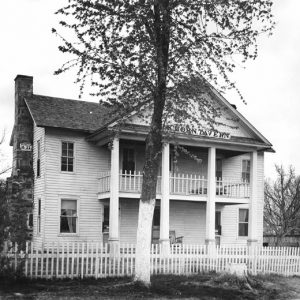
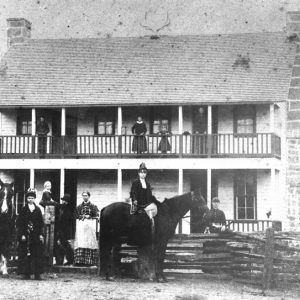
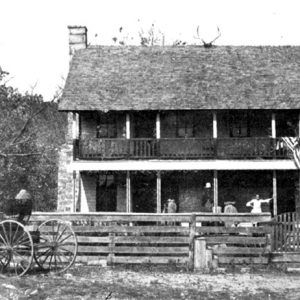
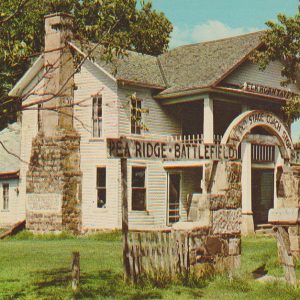
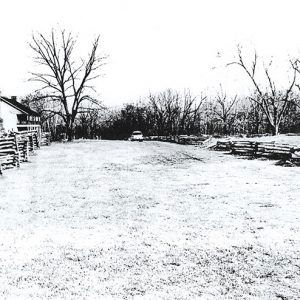




Comments
No comments on this entry yet.